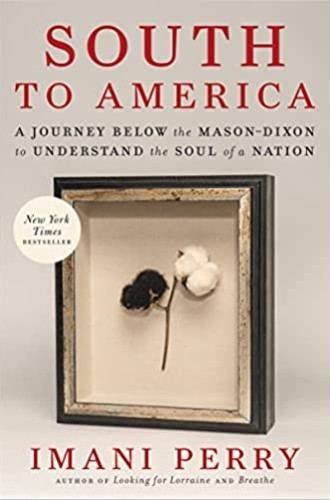Imani Perry’s tour of the American South
South to America shows how one region’s beauty, losses, and inequities have shaped the country as a whole.
Imagine taking a bus tour of approximately one-third of the United States with a guide who not only knows the history of everything she is showing you but has absorbed her material with such passion that the tour has become a testimonial. South to America is no ordinary travel book, and Imani Perry, a writer perhaps best known for her biography of playwright Lorraine Hansberry, Looking for Lorraine, is no ordinary tour guide.
Each chapter shows the unique character of a region or city in the American South, with a final chapter on the Bahamas and Havana, Cuba, completing the journey. Perry begins in Appalachia and shuttles down to Maryland, DC, Virginia, and Louisville—all Upper South enclaves. Then she moves through Alabama (her home state), Mississippi, Tobacco Road, the Sea Islands, Savannah, Charleston, Atlanta, Memphis’s Beale Street, and the peculiar American crescent known as the Black Belt. From there it’s on to the low countries of Florida, Mobile, and New Orleans.
The chapters explore the distinctive qualities of each place, but together they stand for something larger and more original than themselves. They are the South. As the journey proceeds, Perry reveals the South’s formative role in shaping the essence, or soul, of all that America has become. She grieves the thefts that can never be returned: neighborhood schools short on books and computers, endowment-starved historically Black colleges and universities, traditional communities either gentrified and yuppified or cut in two by freeways, professions largely closed to Black people, land promised but never given. The fabric of the South has been torn and bled out, yet it survives as a witness to something more than survival. At our nation’s crossroads, struggling as we are with new forms of old hate, the South signifies a way forward for us all.





